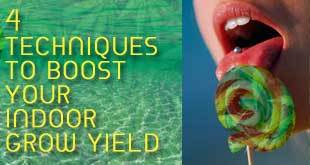Reasons Your Plant Could Be Feeling the Burn
One of the main causes for nute burn is adding bottled nutrients that are too high to your plants water. Using nutrients that are good for tomatoes is the best way to gauge if you are using the right concentrate. Another potential cause of nute burn may be from growing seedlings in soil that is very high in nutrients (also known as “hot” soil), like compost, manure or nutrient enriched soil. The seedlings will usually grow out of it if no more nutrients are added. Nutrient burn is much more serious during the flowering stage because during this time the plant is very vulnerable and may not be able to bounce back from nute burn. Any damage incurred during this stage may lead to the loss of the plant. Extra love and care is needed.
Symptoms of Nutrient Burn
Symptoms that a plant needs your attention are: brown spots, burnt leaf tips, leaves curling under, and the edges of leaves are burnt, yellow or brown. Some growers say nute burn is good because it means that plants are getting lots of nutrients but this is a dangerous belief that can lead to serious health issues for your plant. At the first sign of the issue, it’s good to get on top of balancing it.
Similar Symptoms for Different Issues
It’s also important to be aware that not all symptoms may be a result of nutrient burn. Potassium deficiency shows up as yellowing edges that lead to brown or burnt edges or tips. The difference is that with potassium deficiency, the leaves turn yellow in the margins. Magnesium deficiency also causes crispiness around the edges but in these circumstances, there is yellow and a loss of green color throughout the leaf, especially in the veins. pH fluctuations may also cause light or brown spots to appear on leaves. This will occur if the pH levels are swinging too high.
Solutions include reducing the amount of bottled nutrients added to the water, making sure you’re only using nutrients that are good for tomatoes and reducing the amount of nutrients added through compost and manure. Add pure pH’ed water to your plants. Flushing plants with pure pHe’d water will thin out nutrients and allow plants to use the extra nutrients in the soil. This will help to cure nutrient burn and allow you to grow the healthiest plant you can.













Leave a comment
All comments are moderated before being published.
This site is protected by reCAPTCHA and the Google Privacy Policy and Terms of Service apply.